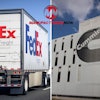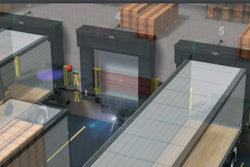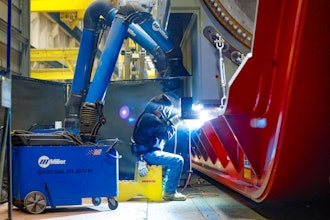A WPGA White Paper
Executive Summary
The use of sunlight for sanitizing and
disinfecting has a long and well-proven
history that dates back to ancient
Greece and Egypt.
Extensive research conducted over the
past 100 years has enhanced our
knowledge of the germ-killing
properties of sunlight, specifically
ultraviolet (UV) rays. This has further
led on to the development of artificial
UV sources that are more precise, safer,
and far more effective than natural
solar light.
2
POWER YOUR UV LED APPLICATIONS
As researchers continue to establish new findings around lights of specific wavelengths and their
impact on both germicidal disinfection and medical treatment, incumbent sources such as
mercury arc lamps — the previously most widely-used UV lamp sources — are being
outperformed by UV LED light.
As toxicity-free and eco-friendly alternatives to mercury lamps, UV LEDs have emerged as UV
sources that save energy with a smaller footprint and a longer lifetimes.
Today, the UV LED market is estimated to grow 24% CAGR from 2018-2023 with some market
estimates reaching $4B globally. The rising concerns regarding the health hazards of mercury, the
plummeting costs of LEDs and the emerging application areas of UV LED lights such as disinfection
and purification, among others, are some of the factors driving the growth of the market.
In this whitepaper, we will delve into the advantages of UV LED systems over traditional
disinfection technologies, discuss major UV LED applications, and provide an overview of LED
modules brought to the market by LG Innotek — a global materials and components company
with over 18 years of experience in LED manufacturing.
UV LED: The Next-Generation of
Ultraviolet Sterilization
Ultraviolet (UV) light is electromagnetic
radiation similar to visible light, X-rays, and
infrared light. The UV part of the
electromagnetic spectrum falls between 10nm
and 400nm, and constitutes nearly 10% of the
total solar light output. Visible light has a longer
wavelength than UV rays, ranging from 400nm
to 700nm, while X-rays are shorter and fall
within the 0.01nm-10nm range.
The UV light can be divided into three distinct
spectral bands (Fig.1):
• UV-A: 315 to 400 nm (long-wave UV)
• UV-B: 280 to 315 nm (medium-wave UV)
• UV-C: 100 to 280 nm (short-wave UV)
3
WHAT IS UV LIGHT?
It’s light in the UV-C wavelength that can
disinfect water, purify air, and sterilize surfaces
by destroying harmful microbial contaminants
and surface pathogens. UV-A is used in curing
and printing, and UV-B finds applications in
phototherapy. Recent research has shown UV-B
to have germicidal properties as well.
Just like the visible portion of the spectrum, UV
light can be generated by artificial means such
as UV lamps – which can be deuterium gas
discharge lamps, mercury arc or vapor lamps –
and LED luminaires.
UV-B/C UV-A Visible Infrared
340 400 780200 1000 (nm)
Fig.1: UV & Visible Light Spectrum
STERILIZING WITH UV LED TECHNOLOGY
UV LEDs combine the benefits of LED (energy
efficiency, longer lifespan, small form factor,
and mechanical robustness) with the germicidal
benefits of ultraviolet light.
In years past, UV-C light in 254nm was
considered the optimum wavelength for
germicidal purposes, primarily because 254nm
was the peak UV light that mercury vapor lamps
could produce. Today, we have UV-C LEDs that
can generate 265nm – the most effective
wavelength for disinfection.
Moreover, UV LEDs can be tuned to specific
wavelength bands. This is especially critical
considering that research has proven that
different germs respond to different UV
wavelengths.
With the discovery of newer and better
combinations of semiconductors and dopants,
it is increasingly possible to produce a wider,
more intense and efficient range of
wavelengths and light outputs for UV LED
applications.
POWER YOUR UV LED APPLICATIONS
Besides the UV-C LED, longer wavelengths in
the 400-405nm range show germicidal action
by triggering photo-activation in bacteria, yeast,
and fungi. LG Innotek’s ‘Visible Disinfection
Lighting’ maximizes the use of the 405nm
wavelength to create eco-friendly sterilization
in indoor spaces conveniently and safely.
4
450nm light has no harmful effects on the body,
which is why it can be safely used to sterilize
large spaces that are frequented by people,
such as public restrooms, medical facilities, and
commercial kitchens. According to test results,
LG Innotek’s 405nm Disinfection Lighting kills
99.9% of E.coli and S.aureus over a 16-hour
exposure time.
While UV-C works by breaking the DNA of
harmful micro-organisms, 405nm light reacts
with a substance called ‘porphyrin’ inside
bacterial molecules to produce a lethal ROS
(Reactive Oxygen Species) that damages the
microorganisms’ cell membrane, causing cell
death (Fig.2).
Another major difference between the two
wavelengths is their effect on the human body.
Depending on the distance and time of
exposure, UV-C radiation may cause some
temporary harm to the eyes and skin.
One of the strongest USPs of 405nm light is
that it provides the advantage of safe and
continuous disinfection, while illuminating the
space at the same time. As such, this light
source allows OEMs to design practical lighting
solutions with effective germicidal powers.
VISIBLE LIGHT DISINFECTION
Fig.2: UV-C & Visible Light Disinfection
POWER YOUR UV LED APPLICATIONS
UV LED VS. OTHER UV TECHNOLOGIES
LED, mercury arc, and vapor lamps all release
UV light, but UV LEDs have certain unique
characteristics that make their spectral output
quite different from that of more conventional
systems.
5
THE MINAMATA CONVENTION ON MERCURY
POWER YOUR UV LED APPLICATIONS
THE HAZARDS OF MERCURY
Several different types of mercury-containing
light bulbs exist on the market available to
consumers, and since elemental mercury is
toxic, special care must be taken when handling
these products.
Mild, limited exposure to mercury can cause
insomnia, headache, mood changes, muscle
atrophy and irritability. Extended exposure to
mercury in certain types of bulbs can result in
respiratory or kidney failure, even death.
Advancements in technology and new research
on UV and the use of LEDs has led to the
greater adoption of LEDs as a more responsible
and environmentally friends light source. As
aforementioned, UV LED is an eco-friendly
option because the light it emits does not
include any chemical substances or heavy
metals.
an international treaty recognized by the
United Nations, addresses the
environmental and human health effects of
anthropogenic emissions and the release of
mercury and mercury compounds.
Building on the European Union (EU) ban of
mercury in many products – including
lighting - the Minamata Convention contains
provisions that relate to the entire life cycle
of mercury, including controls and
reductions across a range of products,
processes and industries where mercury is
used, released or emitted. It also addresses
primary mining of mercury, its export and
import, its safe storage and its disposal once
it is waste.
While the Minamata Convention on Mercury
may not affect your business directly, you
may engage with a company that must
follow the regulations of the Minamata
Convention, such as those in the EU market.
For more information on the Minamata
Convention on Mercury, visit
www.mercuryconvention.org.
Firstly, UV LEDs are point sources that produce a
relatively monochromatic band of UV
concentrated at a specified peak wavelength.
Contrastingly, mercury arc and vapor lamps are
broadband sources. This is also why no filters
are necessary when using UV LEDs.
Today’s global economy allows businesses to
connect and conduct transactions with
companies all over the globe, with each
company adopting the regulations and policy
standards of their home country.
For US businesses dealing with application
areas of European companies, it is important
to note the Minamata Convention on Mercury,
www.mercuryconvention.org
UV LED Applications & Products
Due to the performance, cost, and durability benefits combined with ongoing research and
innovation in developing better and more efficient LED products, UV LEDs are being integrated into
a rapidly growing number of applications. The following table lists some major application areas
and supporting UV LED types.
6
KEY APPLICATION AREAS
CATEGORY APPLICATION AREA REQUIREMENT LED SOLUTION
Living
Washing machines
Water for rinsing, detergent slot UV-C
Deodorizing clothes
UV-A + TiO2
Dryers
Heat exchanger surface UV-C
Cloth managing machines
Vacuum cleaners
Charging station UV-C
Dust canisters 405nm
Kitchen
Refrigerators
Water dispenser faucet tip UV-C
Deodorization UV-A + TiO2
Ovens Tray, kitchen tools UV-C
Water purifiers
Water dispenser faucet tip, water
tank
UV-C
Dish washers Filter, remaining water UV-C
Air
Air conditioners
Drain fan UV-C
Heat exchanger surface 405nm
Air purifiers
Deodorization, inner space
disinfection
405nm
Consumer
electronics
Skincare product sterilizers Sterilization of ‘skin contact area’ UV-C
Escalator handrail sterilizers Sterilization of handle UV-C
Bio-medical Psoriasis treatment
Eliminating activated immune cells
(T-cells)
UV-B
POWER YOUR UV LED APPLICATIONS
With constant efforts to improve the optical power and output of UV-C LEDs, LG Innotek has been
utilizing its proprietary LED vertical chip technology to introduce new products that provide more
powerful sterilizing effects with higher light output. The company intends to continue expanding
the use of UV LEDs into larger commercial and residential applications in the coming years.
LG Innotek has the following current line-up of UV LED products in its portfolio:
7
LG INNOTEK PRODUCT LINE-UP
Fig.3: LG Innotek Product Line-up UV-A
POWER YOUR UV LED APPLICATIONS
8
LG INNOTEK PRODUCT LINE-UP CONTINUED
Fig.4: LG Innotek Product Line-up UV-B and UV-C
POWER YOUR UV LED APPLICATIONS
Conclusion
Adopting UV LEDs offer many practical advantages over conventional UV lamps in terms of
performance, efficiency, reliability, safety, and cost of operation. Potential regulatory barriers for
mercury-based products, consumer preference for non-toxic products, and pressure from competitors
are further motivating OEMs and design engineers for purification equipment, consumer products,
and medical devices to consider UV LEDs. To this end, the ability to match the right LED product to
your requirement is absolutely critical.
With nearly two decades of experience in the design and manufacture of LED systems for OEMs, LG
Innotek is well-positioned to identify and deliver the optimum UV LED sterilizing system for your
application.
For more information on UV LED lighting products from LG Innotek, please contact WPG Americas at
408-392-8100 or visit community.wpgamericas.com
9
About WPG Americas
WPG Americas Inc. is a member of WPG Holdings, the largest electronics distributor in Asia.
Founded in November 2007, WPG Americas is a franchised partner to technology leaders in the
Semiconductor, Passive, Electromechanical, Interconnect, Display and Lighting Solutions markets.
As a member of WPG Holdings, WPG Americas is uniquely positioned to support our diverse
customer base including contract manufacturers (CMs), original equipment manufacturers (OEMs)
and value-added resellers (VARs). WPG Americas is focused on providing total solutions to our
customers and suppliers via superior design engineering services, a focused line card and
exceptional, quality service.
Corporate Headquarters:
WPG Americas
San Jose
5285 Hellyer Avenue
Suite 150
San Jose, CA 95138
Created by New Angle Media
POWER YOUR UV LED APPLICATIONS
Power Your UV LED Applications with LG Innotek
Extensive research over the past century has enhanced our knowledge of the germ-killing properties of sunlight, specifically ultraviolet (UV) rays, which has led to the development of artificial UV light sources that are more precise, safer and more effective than natural light. Learn more about LG Innotek’s UV LEDs and their areas of application.
Latest in Home



















